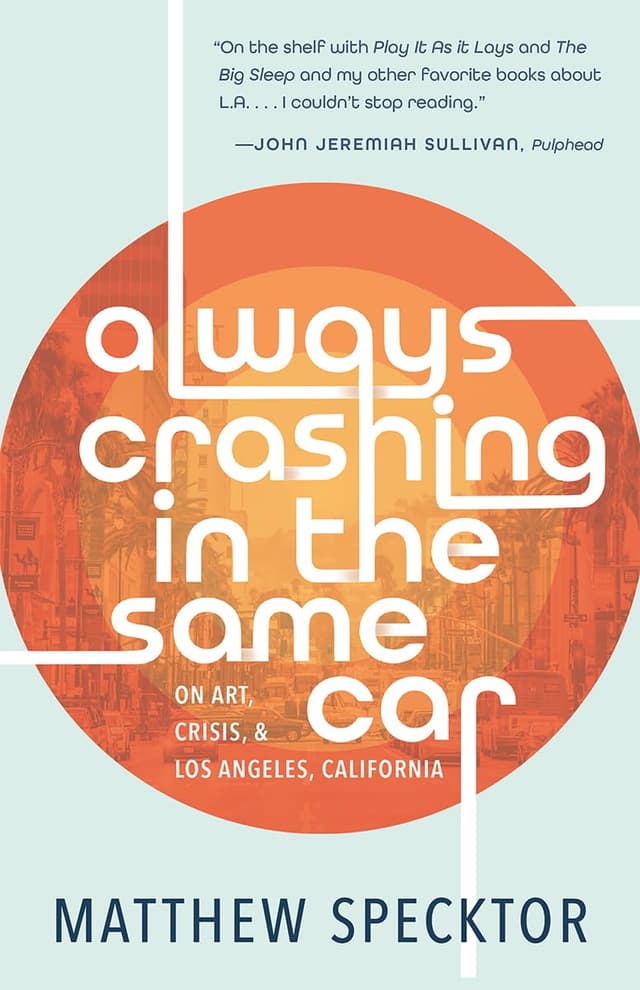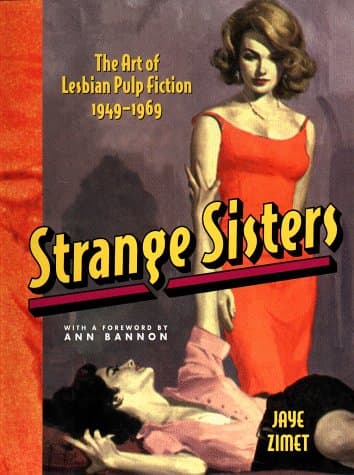Matthew Specktor | August 24, 2021
The Mass Market Paperback Edition
On editions, reading habits, and portability
Recommended Products

A new release by Matthew Specktor.

A complex literary novel by Shirley Hazzard.

A book about the gloriously lurid look of midcentury dime store novels.
Matthew Specktor (MS) is the author of the new release, Always Crashing in the Same Car: On Art, Crisis, and Los Angeles. We’re pleased to have him on the page today. -Colin (CJN)
Matthew here. I have in my hand a rectangular object, stubbornly analog, slightly larger than an iPhone Pro Max (6.8” x 4.25”), but decidedly thicker. Like your phone, it was designed to be carried in a purse or a pocket, meant to occupy your leisure time, and—unlike your phone—was, sometimes still is, available at a supermarket or a pharmacy. The object is a paperback book, of course, not the kind you see on the display tables at Barnes & Noble, nor the kind you get when you order from Amazon (those are known as “Trade Paperback” editions). This, decidedly smaller and more cheaply-made object is known as a “Mass Market Paperback.” It costs less than a standard paperback—Mass Market editions reliably price themselves under ten dollars—and it is getting harder to find.
I am making some assumptions here about your reading habits. If you’re reading James Patterson or Nora Roberts or romance novels, if you happen to grab a Steven King or a Game of Thrones book on your way through an airport—no shade on any of these things, of course—then all that explanation is superfluous. You’ve held one in your hand recently. But there was a time in which books of all stripes—highbrow novels by Saul Bellow or John Updike, Toni Morrison’s run of early masterpieces, Dickens and Shakespeare, mystery novels by Ross Macdonald or Dick Francis, elliptical narratives by Elizabeth Bowen or Elizabeth Taylor, writers who were hardly popular in England, let alone in the States—could be commonly found in mass market paperback editions. It’s a market that’s been eroded, though not quite destroyed, by the Kindle. (It’s telling, given the filmmaker’s fetishistic attention to retro/period detail, that Quentin Tarantino’s novelization of Once Upon a Time in Hollywood has been issued directly into this format.) These days, most non-genre books don’t appear in mass paperback at all.
Why is this interesting?
Reading habits fascinate me. I don’t mean “Why don’t people read anymore?” or “Is publishing dying?”—these clickbait-y questions are eternally boring—but rather what do people read, and how do we read it? Why do we call it one thing (“commercial fiction,” “YA”) when it might as easily be another? Format has everything to do with it, as does price point, as does packaging. Some of the more prized objects in my possession include strange bits of publishing misdirection: a complex literary novel like Shirley Hazzard’s The Transit of Venus dressed up to look like a bodice-ripper. At the other end of the spectrum, there’s the gloriously lurid look of midcentury dime store novels, the sorts of books that were only ever available as mass market editions to begin with. The currents of class, of privilege (economic and otherwise), of social and cultural permission run directly through the history of publishing, and nowhere more so than in the mass paperback edition.
Which, of course, is dying the same slow death it has been for the last thirty years. This article from Publisher’s Weekly a few years back spells it out pretty clearly: mass-market sales had plummeted below 10% of total print sales, mostly as a result of diminished shelf-space available for them in retail outlets. The article notes that the anticipated destruction of the market by e-books had flattened (as with other formats, publishers had discovered the Kindle did not presage the death of print), but adds a few more interesting notes, as in the form of this quote from a mass-market-edition publisher:
“Shelf space for mass market books has indeed continued to shrink in the mass merchandise accounts,” said Jennifer Long, associate publisher at Pocket Books. “This has had little impact on top-tier authors, as they are still given shelf space; however, it does present a challenge for lesser known authors.”
This “challenge for lesser-known authors” may sound benign, but of course we know what this means: bestselling writers, publishing’s 1%, will continue to thrive, but, uh, tough nuts for everyone else. The article goes on to note that mass market paperbacks have long been considered a cornerstone of the entire publishing industry for multiple reasons:
With their smaller print, shorter trim size, and cheaper paper, mass market titles have been the least expensive print format since they started appearing after World War II. Though they deliver publishers the smallest profit margin of all the formats, they remain essential. Considered the “gateway” format, some sources said they believe mass market titles are the books that turn some people on to reading, period.
Such a gateway, of course, will remain, but it’s a shame to see it shrink: to find books less readily available--or even, simply, less visible--in the workaday world, less prone to showing up in homely but stubbornly utilitarian form. You can, of course, still pull your reading material out of your pocket. It’s only a shame you won’t be able to warp its cover or dogear its pages, or replace it so cheaply should you be unlucky enough to spill your coffee over it. (MS)
Quick Links:
Bamarush, explained (CJN)
With a Frenzy of Deals, Fanatics Swoops In to Reorder the Trading-Card World (NRB)
[Sponsored Link] Noah here. New week, new links for my company, Variance. We are building a PLG CRM to help software companies grow their customers. Of possible interest to WITI readers is a recent post on why we decided to publish all our culture docs and some writing on PLG Content Marketing. Get in touch if you have questions or want to learn more. (NRB)
Thanks for reading,
Noah (NRB) & Colin (CJN) & Matthew (MS)
—
Why is this interesting? is a daily email from Noah Brier & Colin Nagy (and friends!) about interesting things. If you’ve enjoyed this edition, please consider forwarding it to a friend. If you’re reading it for the first time, consider subscribing (it’s free!).
